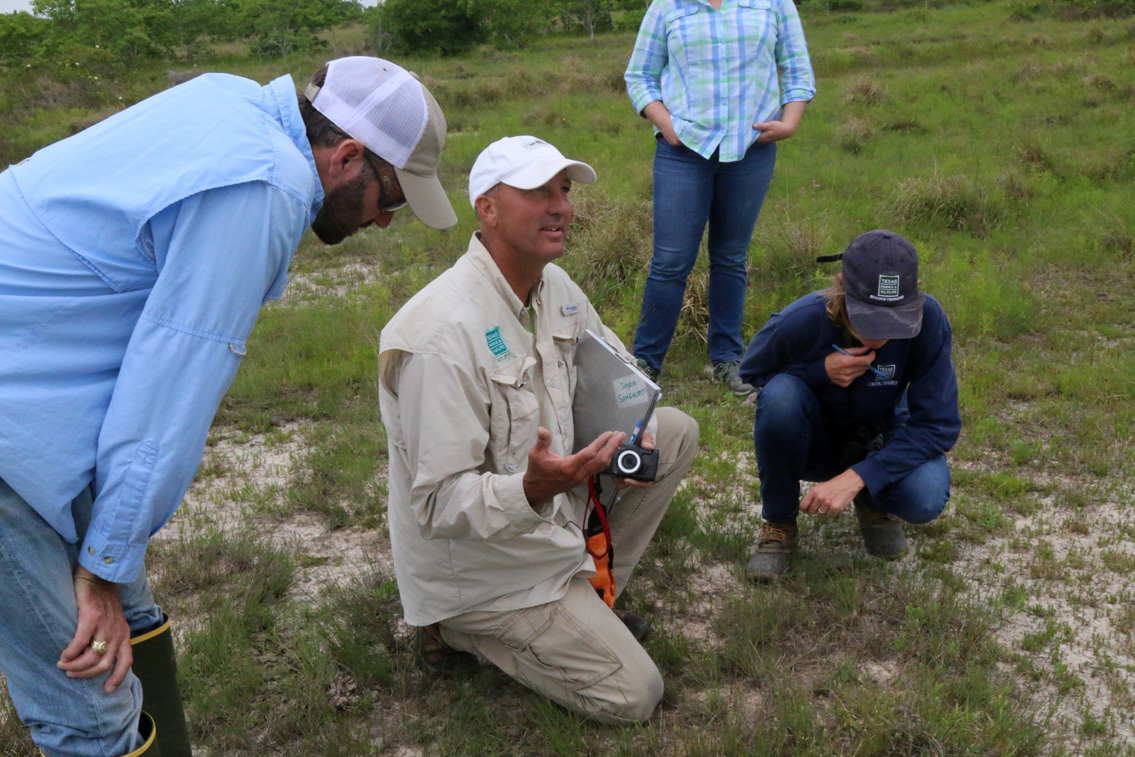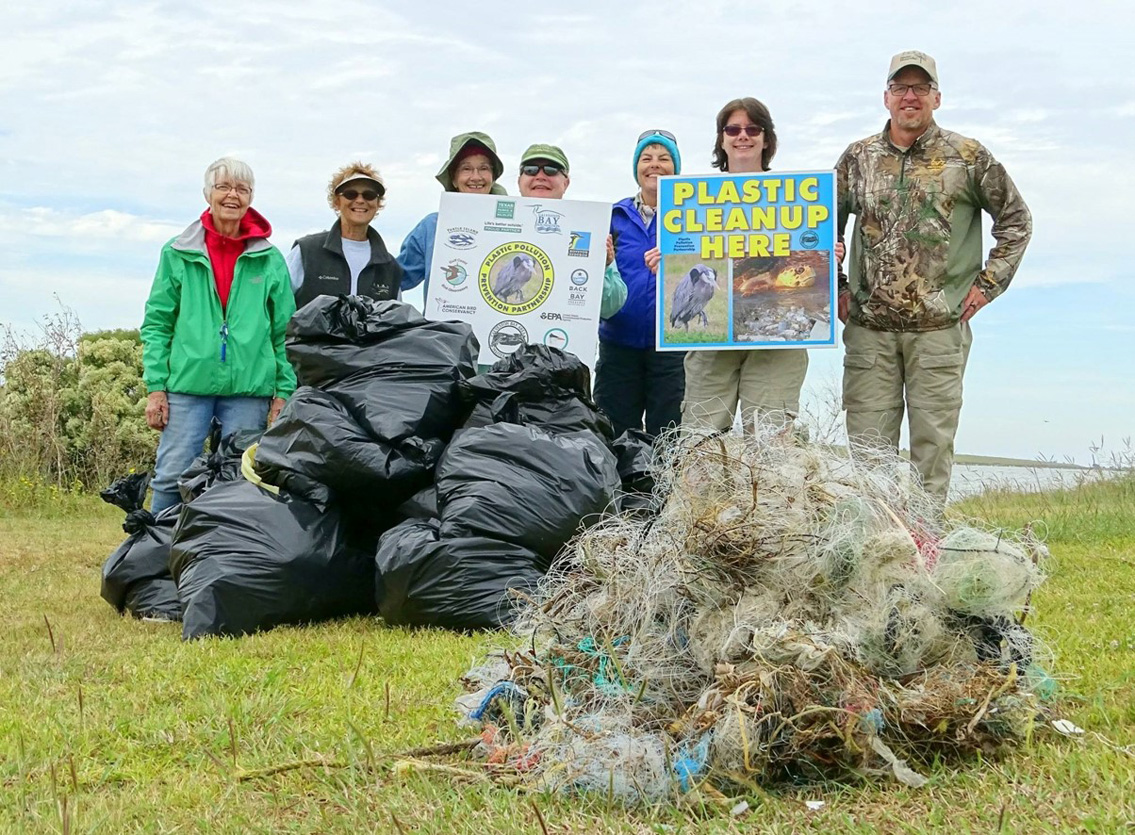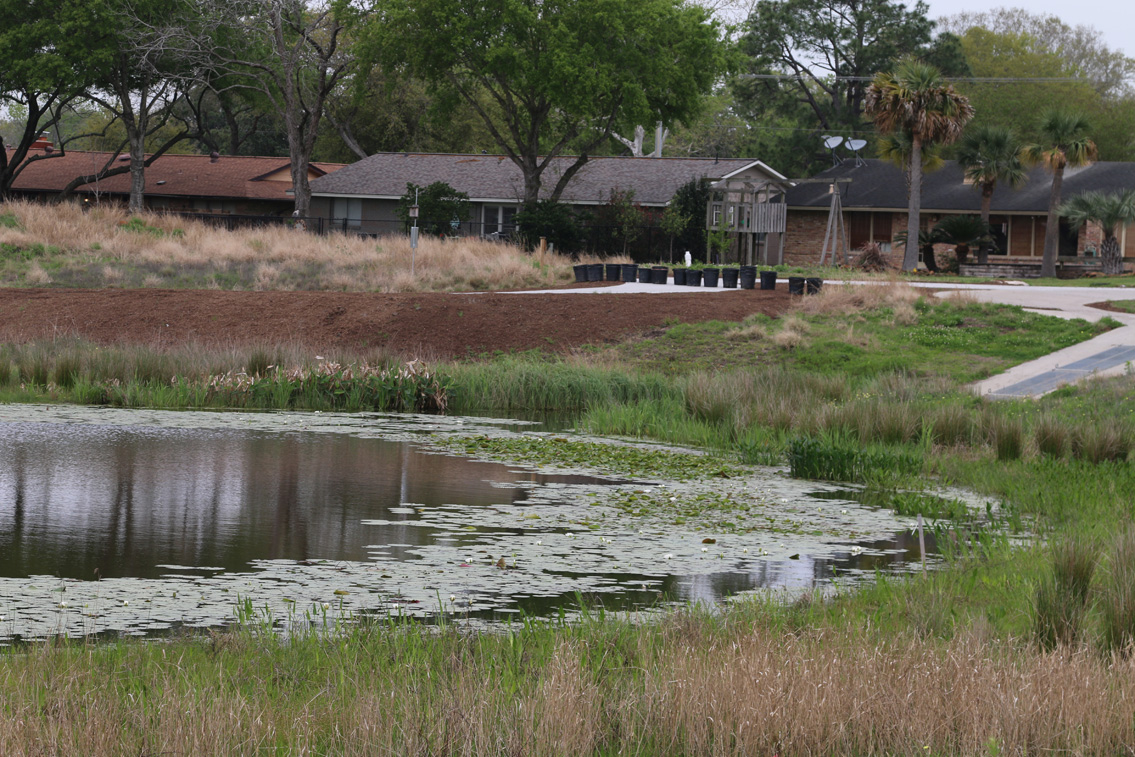Since many agencies and organizations are concerned with managing the resources of Galveston Bay, coordinating a broad range of issues among them is necessary. Our program is committed to building vital partnerships with these organizations. We strive to effectively work with local governments, businesses, ports, commercial fisheries, recreational anglers, environmental organizations, state and federal natural resource agencies, and members of the public. The contributions of these partners shape the success of the program initiatives and a sustainable future for Galveston Bay.
Below are examples of successful partnerships built by the Estuary Program:

The goal of the Conservation Assistance Program (CAP) is to support regional efforts to preserve wetlands and coastal habitats that protect the long-term health and productivity of Galveston Bay. From 2011 to 2017, the CAP was a partnership between the Estuary Program, Galveston Bay Foundation, Shead Conservation Solutions, and members of the Natural Resources Uses Subcommittee. The CAP provides financial assistance to:
- coordinate and build consensus with conservation partners to identify conservation projects;
- develop funding strategies, work with landowners to negotiate conservation transactions;
- carry out due diligence; and
- finalize the purchase and transfer of title to the appropriate land conservation entity
From 2011 to 2017, nine projects closed under this partnership, including the Lone Pine Farm and Anahuac National Wildlife Refuge Coastal Prairie, permanently protecting 5,137 acres and leveraging $9,000,000. Approximately 10,000 acres of habitat have ongoing efforts, including Gordy Marsh Phase II Conservation and the Anchor Bay acquisition of the Coastal Heritage Preserve.

In 2015, stakeholders identified the amount of fishing line on the Texas City Dike as a wildlife and public safety issue. Since then, several volunteer groups have routinely conducted trash and fishing line cleanups. However, stakeholders wanted to develop an outreach campaign aimed at changing the fishing line containment and recycling habits of anglers on the dike.
A small workgroup formed to develop an angler outreach campaign in the fall of 2017. Partners for this workgroup include the Houston Zoo, the Galveston Bay Estuary Program, Audubon Texas Coastal Program, and the Galveston Bay Chapter – Texas Master Naturalist. The City of Texas City’s waste management department is also an integral partner providing essential local government support.
The workgroup started by assessing the amount of fishing line currently on the dike. In December 2017, volunteers collected over 58 pounds of fishing line at 11 sampling points. The group then recruited volunteers to conduct interviews with anglers fishing on the dike. The survey was used to help refine what initiatives would help anglers keep the line off the ground.
After assessing the data, the workgroup decided to develop messages and tools that could be used for a pilot project. The group hopes to have the project implemented by mid-summer 2018. They will then measure results and decide which pilot strategy was the most successful to fully implement for the entire dike. The workgroup will continue to monitor and adjust the project based on the effectiveness of the initiatives. The goal is to create a turnkey fishing line campaign that is easily accessible to other agencies, local governments, and public groups to adapt for their communities.

Best management practices (BMPs) include any practice that could be implemented to protect water quality and ensure safe human and aquatic life use. The successful implementation of BMPs is dependent on gaining early and sustained participation and involvement of stakeholders in the watershed. Stormwater treatment wetlands is one example of a BMP.
Exploration Green is a 178-acre park located at the former Clear Lake Golf Course that was turned into a stormwater wetland. The park’s master plan includes trails, new plantings, and a chain of lakes along with stormwater wetlands for water filtration and habitat to improve water quality. The park is being developed in five phases, with seven acres of wetlands in each phase. The project is led by a group of partners that include the Clear Lake Water Authority, the Galveston Bay Foundation, Trees for Houston, SWA Architecture Group, the Galveston Bay Estuary Program, and the Galveston Bay Area Chapter – Texas Master Naturalist. The project is coordinated by the Texas Coastal Watershed Partners (TCWP) and the Exploration Green Conservancy. Several community members have also dedicated volunteer time to help install plants and trees. The TCWP provided hydrological studies, engineered outflow designs, engineering consultation, visitor signage, and stormwater wetlands consultation.
The Monitoring and Research subcommittee of the Council meets quarterly to discuss emerging issues, identify priorities for implementation of The Plan, and share results of ongoing and completed research efforts. This format provides a forum for discussing gaps in data and information for the Galveston Bay estuary, overseeing the Regional Monitoring Plan, and directing and approving monitoring design changes.
The subcommittee works as a partnership to recommend specific research projects for implementation through the Estuary Program’s annual work plan. The other subcommittees, Water and Sediment Quality, Natural Resources Uses, and Public Participation and Education, provide a forum for project coordination, sharing of best practices, leveraging of resources, and identification of funding sources.
